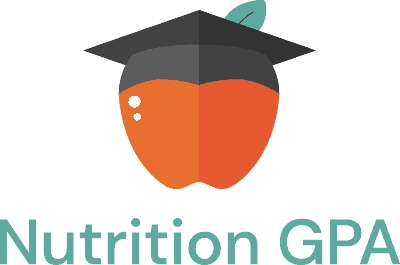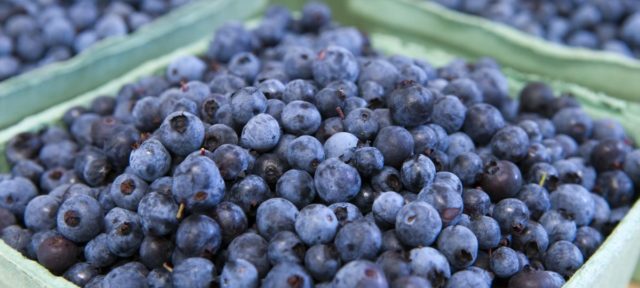A new paper in the British Journal of Nutrition asks whether the pace at which you lose weight affects how much of that lost weight is fat (as opposed to muscle) and the impact on your metabolism after weight loss. To answer this question, the authors pooled the results of seven studies that compared rapid to gradual weight loss, where both groups lost about the same amount of weight but at different speeds.
This is a question that I am very interested in, so I was excited to find a breakdown of this new study in a recent issue of the Nutrition Examination Research Digest, a terrific publication affectionately known to subscribers as NERD.
This article also available as a podcast. Click to listen.
Advantages of slower weight loss
For years, I’ve been advocating slow weight loss as a better way to achieve sustainable weight loss, which is the only kind that really counts and the hardest to achieve.
Make smaller but more permanent changes to your habits and behavior. The weight comes off more slowly, but you aren’t just losing weight; you’re learning how to be someone who weighs less.
Part of my rationale for this approach is psychological and behavioral. To lose weight quickly, diets usually involve a dramatic but temporary change in your behavior. Once you’ve lost the weight, however, you tend to revert to old habits and behaviors that lead you to regain the weight you’ve lost.
Instead, I’d rather see you make smaller but more permanent changes to your habits and behavior. The weight comes off more slowly, but you aren’t just losing weight; you’re learning how to be someone who weighs less.
But another big part of my rationale is physiological. Many popular diets are designed to produce weight loss at a rate of 5-10% of your body weight per month. But that’s significantly faster than most people can shed body fat. If you’re losing weight faster than you can lose fat, that means you’re losing lean muscle, and that’s not what you want to be losing.
RELATED: How Fast Can You Lose Fat?
I’m convinced that slower weight loss (2% or less of your body weight per month) results in losing more body fat (and less muscle). It’s also less likely to cause a slowdown in your metabolism, which is going to make it easier to maintain the weight loss. And I’m always on the lookout for research to either support or refute this belief.
To date, there have only been a handful of studies on the advantages of slower weight loss, some of them pretty small. The latest attempts to get a better grasp on the subject by pooling the results of several studies and doing a meta-analysis of the results.
What research says about slower weight loss
Joining me to talk about the results is Gregory Lopez. He’s editor in chief of the Nutrition Examination Research Digest and Examine.com. He obtained his master’s degree in molecular biophysics from Johns Hopkins University, and his doctor of pharmacy degree from the University of Maryland, Baltimore. Greg and his team took a closer at this study in a recent issue of the Nutrition Examination Research Digest
Greg, first give us the topline: How did slow weight loss compare with fast weight loss in this meta-analysis?
Overall, their conclusion is that slow weight loss is better for body composition than fast weight loss. There are a couple of caveats based on their selection criteria. They looked at studies that had similar total amounts of weight that were lost. And so these results would not apply to people who lose more weight on one program versus another. Also, the studies were relatively short term—all less than a year.
They also looked at the resting metabolic rate. We know that when we restrict calories, eventually the body may adjust its metabolic rate downward in order to conserve energy. And that’s, of course, the bane of dieters everywhere. If we’re restricting calories more dramatically in order to lose weight more quickly, is that having an even more deleterious effect on resting metabolic rate? What did they see in terms of resting metabolism?
The metabolic rate didn’t sink as much on a slow diet as opposed to a fast diet. Essentially, slower dieting came out on top.
Whenever we have studies comparing fast versus slow weight loss, my question is always: How fast is fast and how slow is slow? And when you and I went through the individual seven studies that they looked at, we found a really big range. The slow paces ranged from less than half a pound a week, which is pretty slow, to over two pounds a week. The fast paces ranged anywhere from one to four pounds a week.
There were a couple of studies where the slow pace was actually faster than the fast pace of one of the other studies! How does that impact what we can take away from these results?
It does muddle things. You really can’t answer the question of how much going slower or faster changes things given the analysis they did here and the data that’s available. It would have been really interesting to see an individual-level meta-analysis.
A meta-analysis takes a bunch of studies and lumps them together, and it takes the average results of these studies. So you’re taking an average of an average. If you can get the data for each individual person in the studies, you can pull them all into one single big study. And since you’d know how much exactly each person lost, rather than how much they lost on average within a study, you can do a dose-response analysis. So, if you’re interested in figuring out how slow is slow enough and how fast is too fast, that kind of analysis could be useful.
So, what we know from this particular meta-analysis is that it looks like whether you’re losing weight faster or slower does make a difference in terms of how much fat you lose. What we can’t answer from this study is: What is the sweet spot? What is the perfect pace where most of the weight you’re losing is fat and the least is lean muscle. That is still an open question.
I would agree with that. And I would also say that it provides a direction for future research.
I also want to talk a little bit more about the Nutrition Examination Research Digest. Tell us a little bit about what you do at Examine.com.
We try to distill the research around nutrition and supplementation—what the evidence says works and what doesn’t work. And we pride ourselves on being independent. Our goal is to kind of help people who are nutrition enthusiasts, or even professionals, get some of the latest evidence that they need.
I think you guys do such a great job—not only at going through the research but putting it into context, explaining some of the trickier concepts and pointing out potential weaknesses. I also think it’s extraordinary that you do not sell any products and don’t accept advertising. This work is completely supported by your subscription fees. That puts it pretty much in a class by itself. So, thank you for what you do, Greg, and for joining me today to add your insights.
Digging into the Data
After my conversation with Greg, I did delve into the details of a couple of the larger studies included in the meta-analysis, where the slow pace of weight loss matched what I would recommend, to see how those folks fared.
Although both groups lost the same amount of weight, the slow group lost 10% more body fat than the faster group and 50% less lean muscle.
One of them involved 200 subjects, both men and women. Over the course of the study, the subjects lost 15% of their starting body weight on average. The slower group lost at a pace of about 1.5% of their total body weight per month. The faster group lost at a more typical rate of 4.5% of their total body weight per month. Although both groups lost the same amount of weight, the slow group lost 10% more body fat than the faster group and 50% less lean muscle.
The other study I looked at involved 68 subjects, all men. This was a shorter study and so the total amount of weight lost was less: about 6% of their starting body weight. But the pacing was virtually identical. The slower group lost 1.5% of their total body weight per month and the faster group 4.5% per month. But the difference in body composition was a lot more dramatic. The slower group lost 50% more fat and 75% less lean muscle than the faster group.
In short, slowing down the pace of weight loss does appear to offer some real advantages. For more on my approach to creating sustainable weight loss, please check out the resources at Weighless.Life.
Originally published at Quickanddirtytips.com



